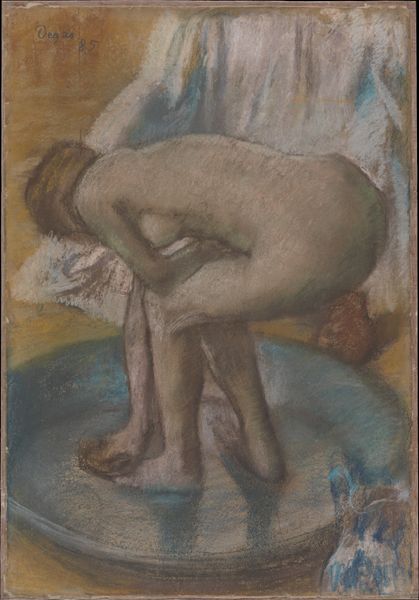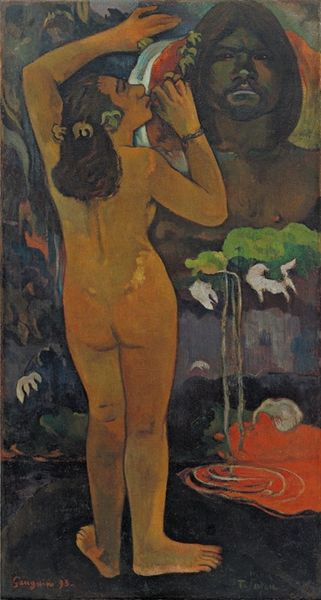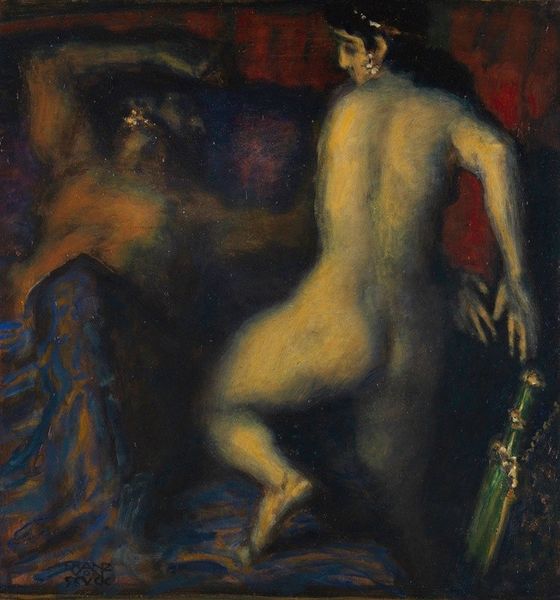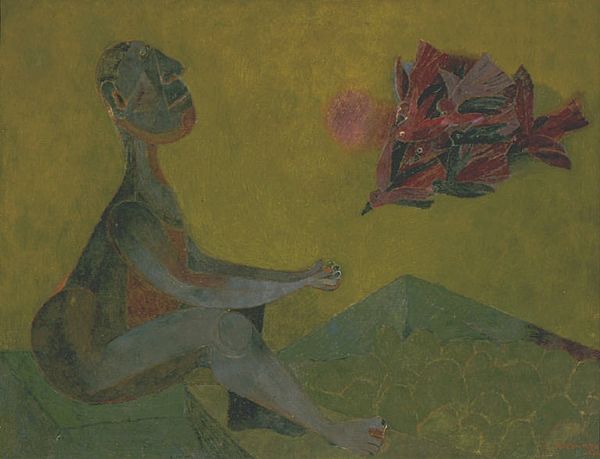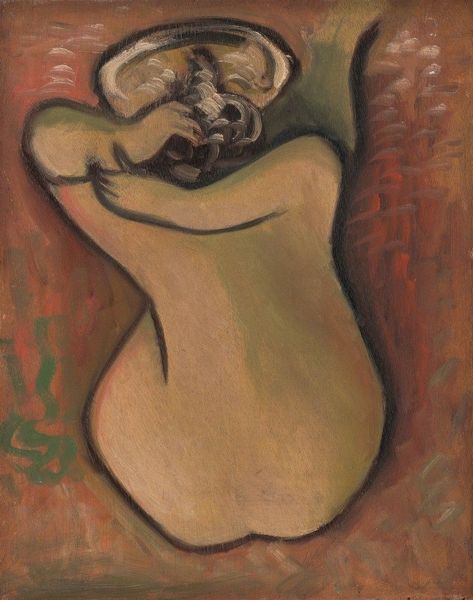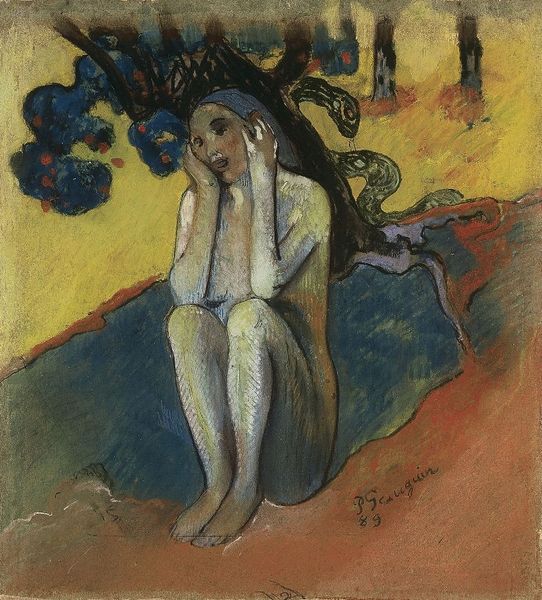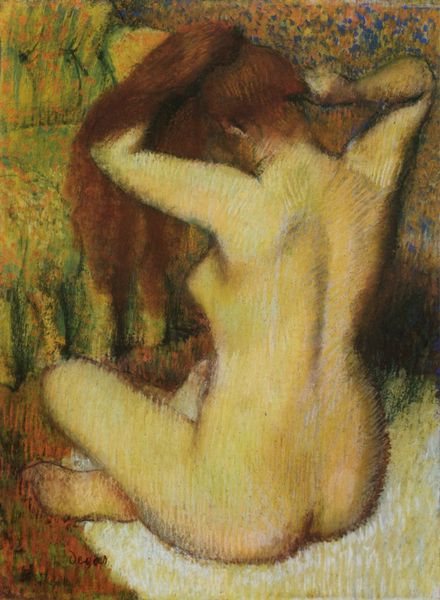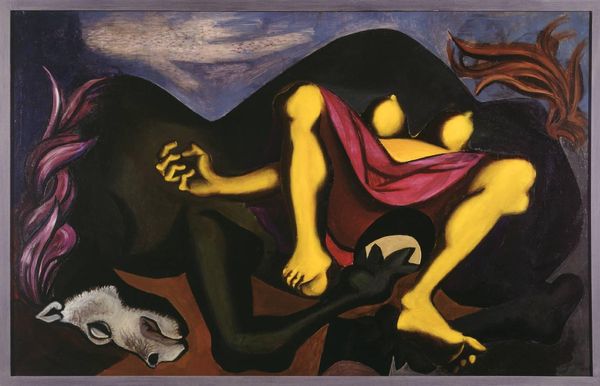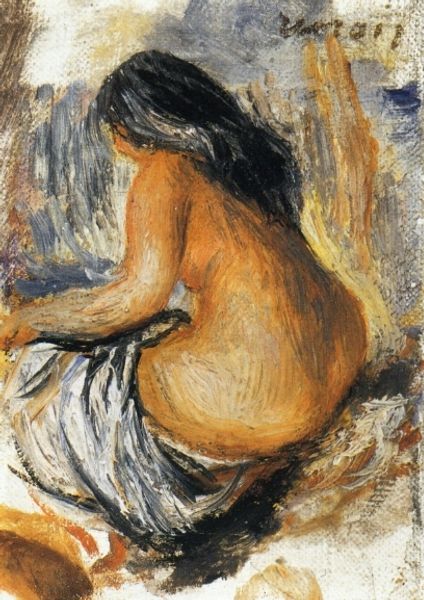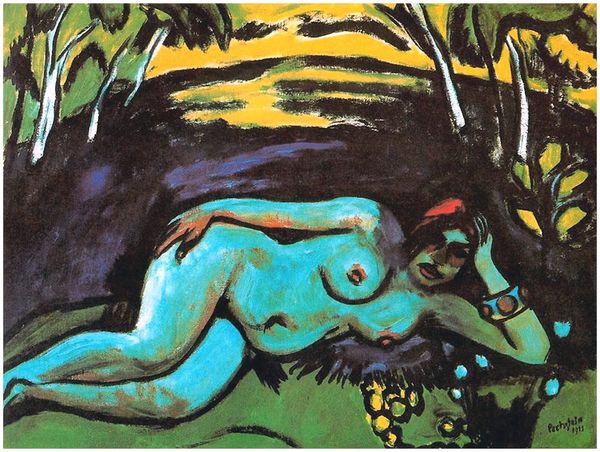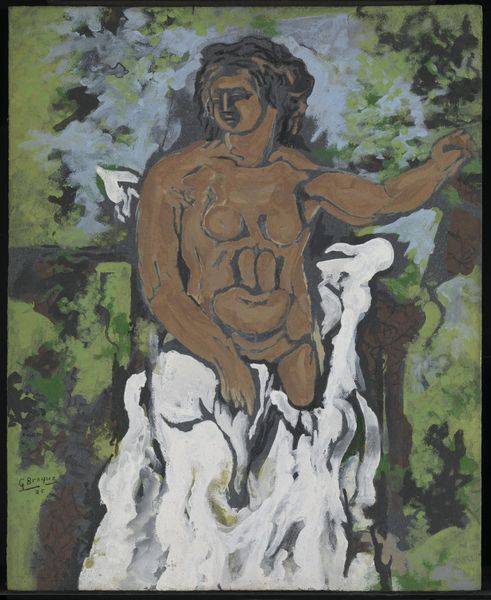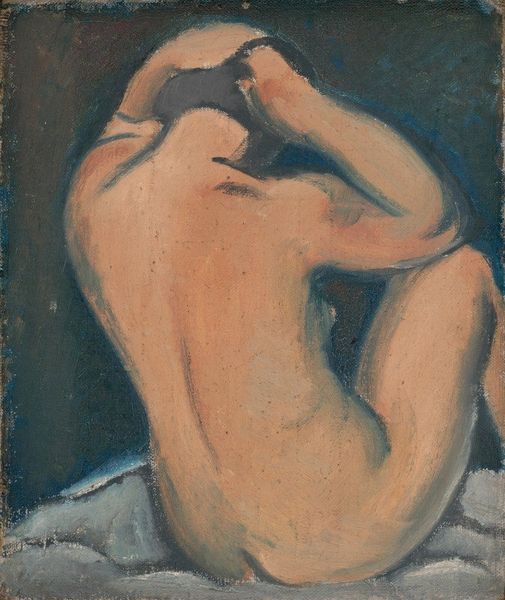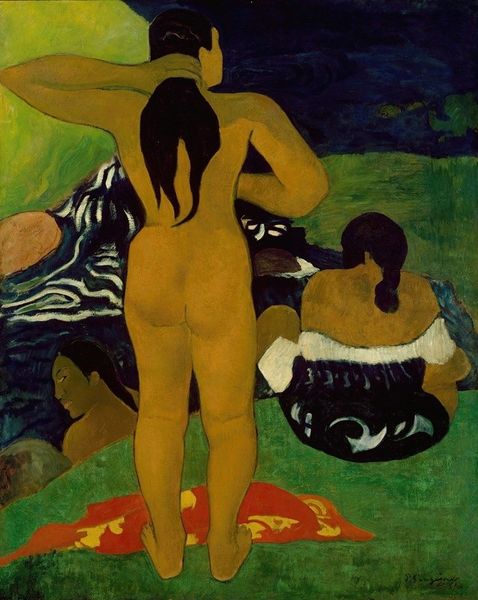
painting, oil-paint, impasto
#
portrait
#
figurative
#
painting
#
oil-paint
#
landscape
#
figuration
#
oil painting
#
impasto
#
symbolism
#
post-impressionism
#
nude
Copyright: Public Domain: Artvee
Editor: We're looking at Paul Gauguin's "Vahine no te miti" from 1892, painted in oil. It's striking how Gauguin uses this almost shockingly bright yellow sand as a backdrop for a figure turned away from us, gazing at the ocean. What initially jumps out at you about this piece? Curator: Well, right away I feel that deep pull towards the exotic "other," something that really captivated artists in the late 19th century, and obviously, Gauguin in particular. That yellow is almost aggressively synthetic, isn't it? It clashes beautifully and purposefully. But doesn’t it also make you wonder about the artist’s true understanding, or perhaps misunderstanding, of Tahitian culture? Is it truly celebrating, or simply appropriating? Editor: That's a great point! I hadn't thought about the potential for cultural appropriation so directly. The flattened perspective and unnatural colours do lend it an almost dreamlike quality, but also distance the scene from reality. Curator: Exactly! Gauguin's Tahiti isn’t Tahiti, it's a constructed idea of Tahiti. Look at how he simplifies the human form, almost abstracting it. And the intense color. Do you find that his post-impressionistic use of colors and shapes makes it feel symbolic rather than realistic? Editor: Definitely. The more I look, the more I see that simplified form echoing in the shapes of the waves, a connection that feels more about feeling than representation. The shells scattered in the left corner also add this earthy quality, right? Curator: I love how you’re picking up on those visual rhymes! Gauguin layers meaning, inviting us to interpret, but perhaps always from a European gaze. Food for thought, and, maybe a slight discomfort alongside the beauty, what do you think? Editor: It certainly complicates my initial impression. It's a beautiful piece, but seeing it through a critical lens makes it even more engaging.
Comments
No comments
Be the first to comment and join the conversation on the ultimate creative platform.
